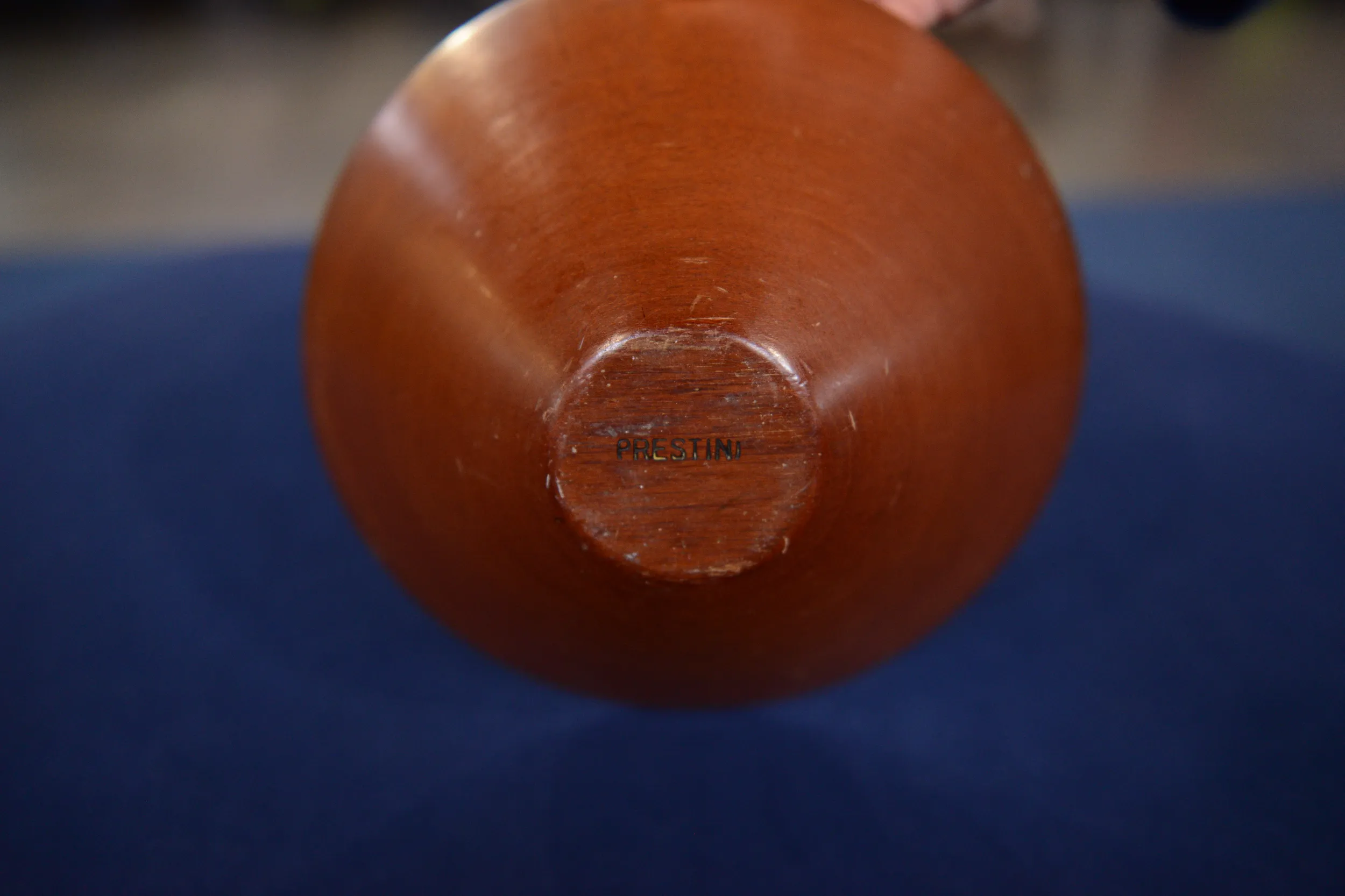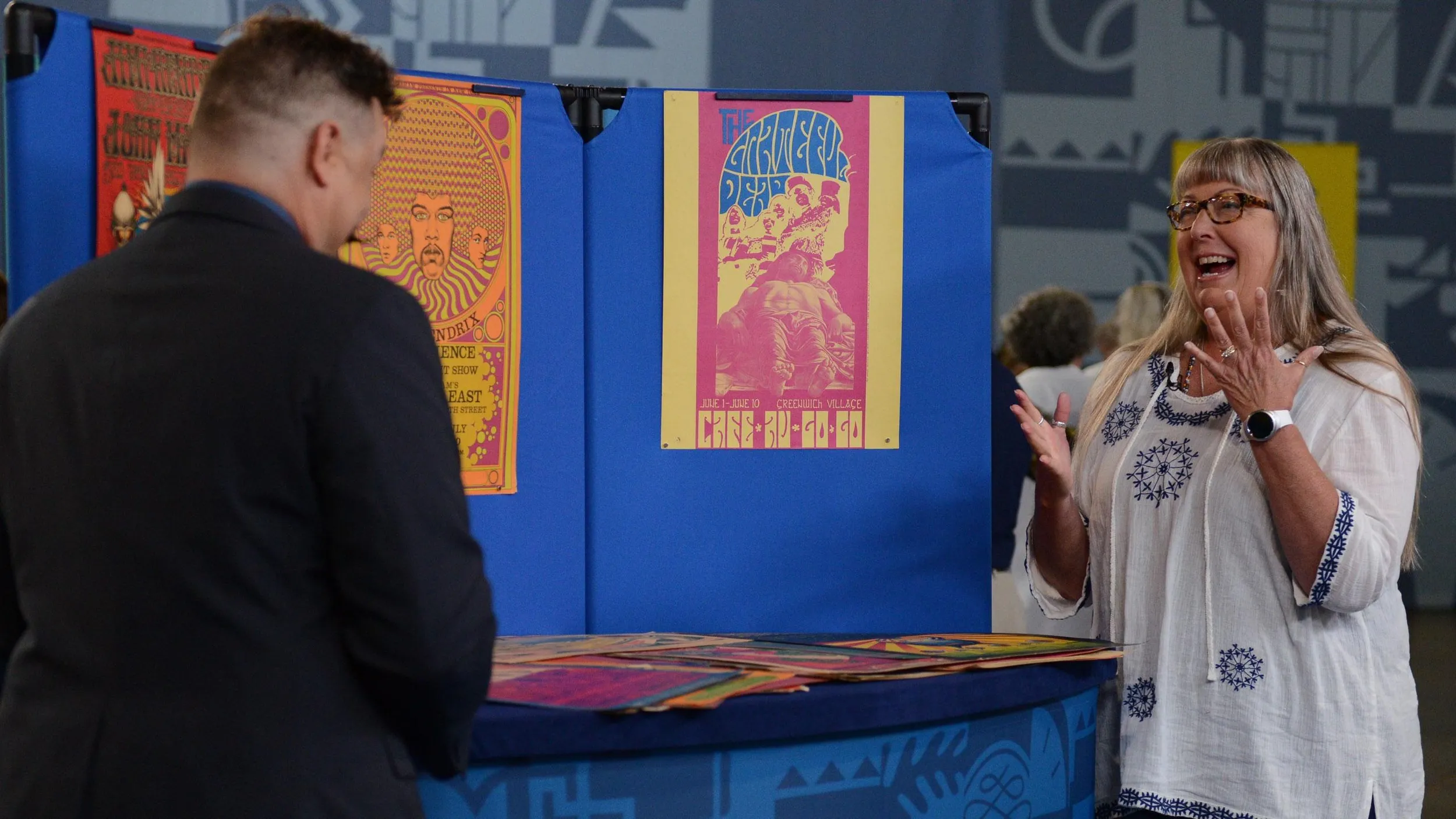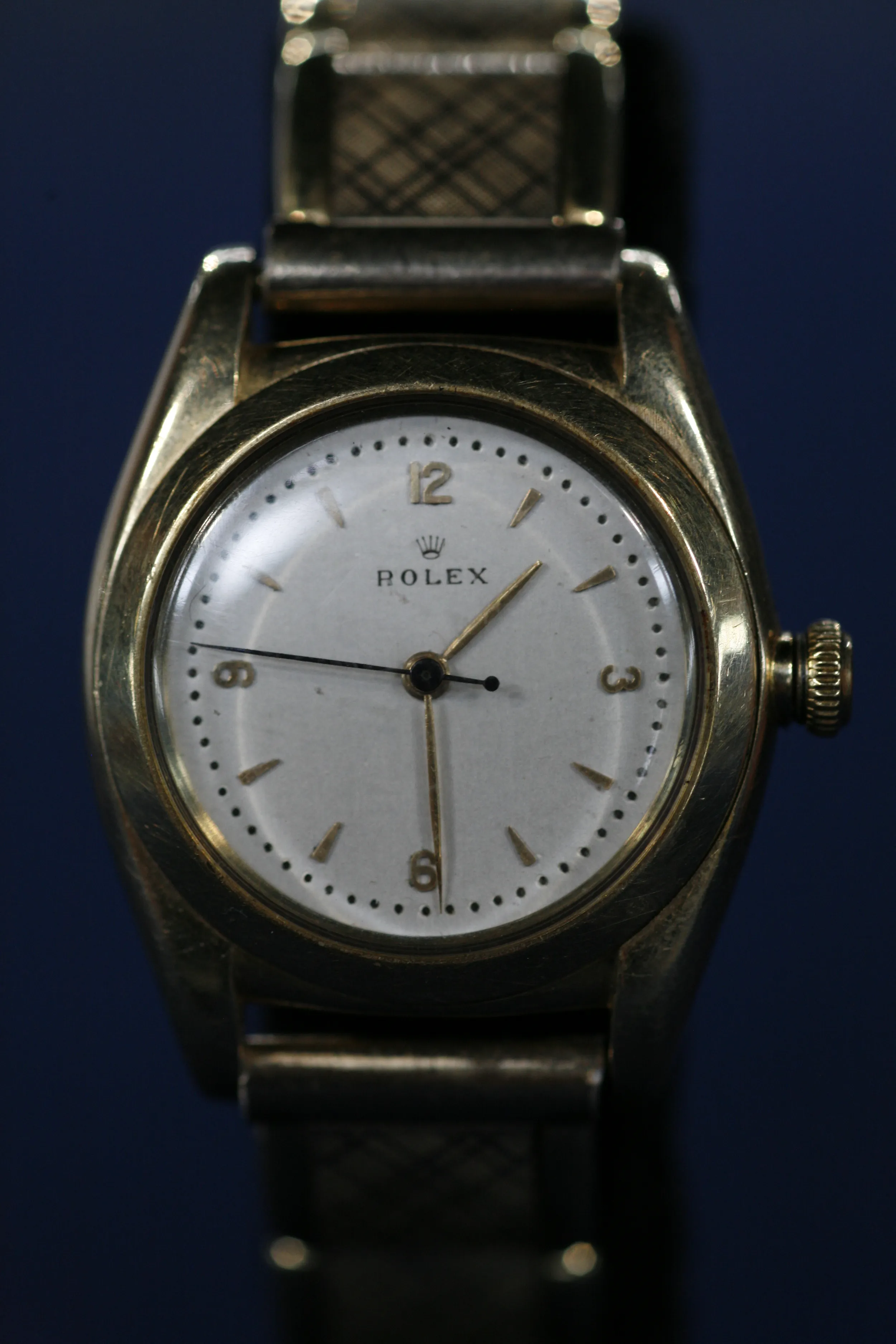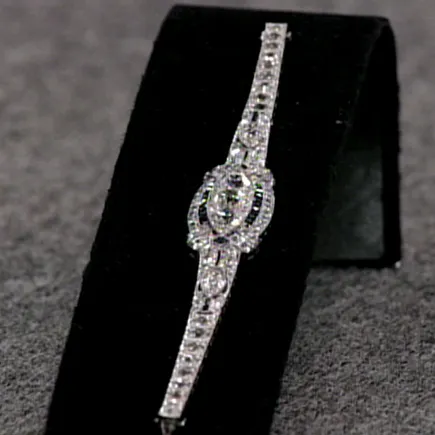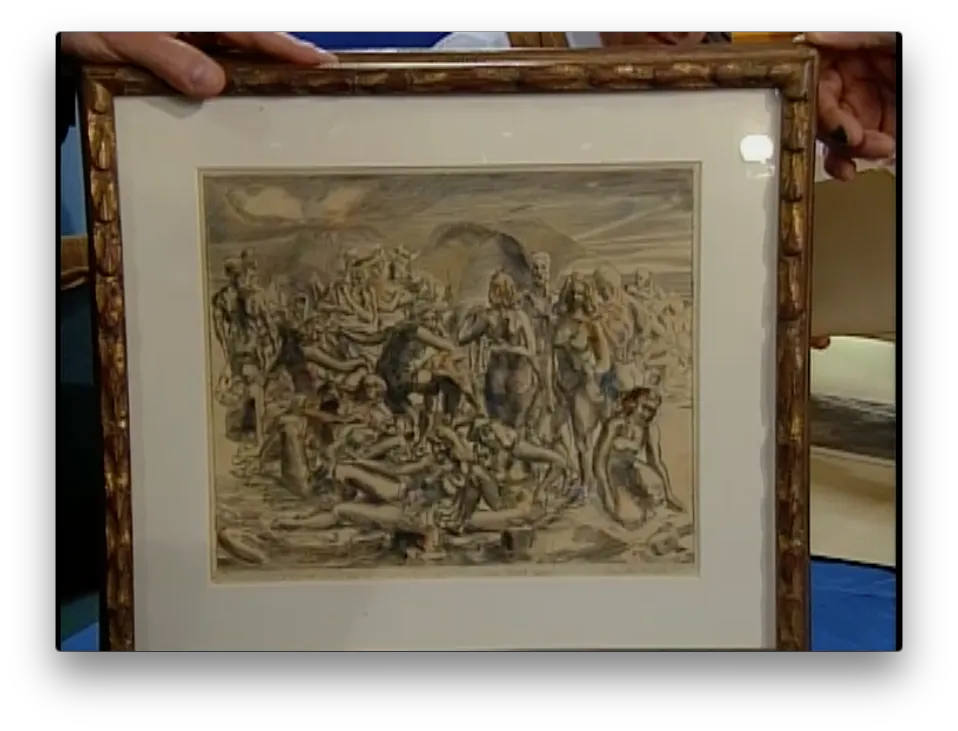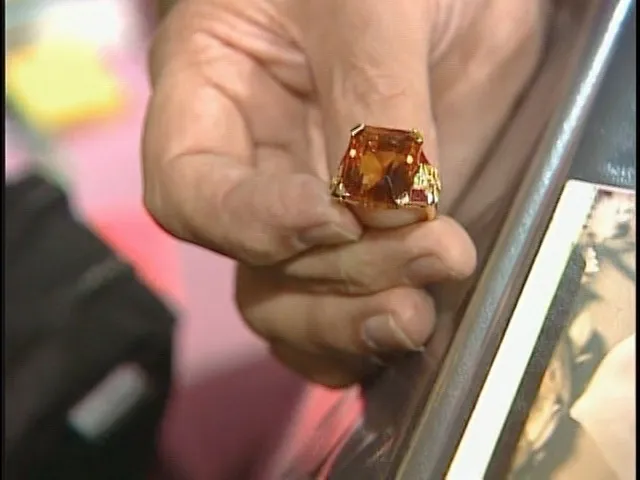GUEST: So, I was on a garage sale trip and I found it in Dallas about 20 years ago. Yeah, it's been sitting on my shelf ever since.
APPRAISER: And what drew you to it at that garage sale?
GUEST: I think I really love the color of it, how light it was and how thin the wood is, and I just love the shape. It's got a little bit of a mid-century modern feel to it.
APPRAISER: So what do you know about who made this bowl?
GUEST: So I looked it up online, and there's a, I think, a mark at the bottom, and I just knew a little bit about the artist, but really not very much. That's why I'm here.
APPRAISER: Okay, well, the bowl is marked on the underside with a pressed mark, "Prestini."
GUEST: Uh-huh.
APPRAISER: I like to think that's from the Italian branch of my family, the Prestons, that changed their name. I'm just kidding, not really. James Prestini was born to Italian immigrant parents in Connecticut in 1908, and it was while working as a caddie at a local golf course that he met Thomas Watson Sr. of IBM.
GUEST: Oh, wow.
APPRAISER: And Watson enabled Prestini to attend Yale. So Prestini got a degree from Yale in mechanical engineering and then went back and got a second degree in education, and that's how he ended up as a teacher of mathematics in suburban Chicago.
GUEST: Wow.
APPRAISER: And it was while teaching at the school that he taught a class on woodworking, basically wood shop.
GUEST: Oh, my gosh.
APPRAISER: And so he started turning wood bowls, wood trays, cups, plates. And he really discovered this artistic side he didn't know he had. Up to this time, he'd been an engineer and a mathematician.
GUEST: Isn't that interesting.
APPRAISER: But he feels this burgeoning artistry, and he's expressing it with these amazingly thin turned wood bowls. It is a wood bowl, yet it has the thinness and
fineness of something glass or the finest porcelain, even. He was turning these bowls and other items throughout the period, basically 20 years running from 1933 to 1953, but this bowl is actually after 1938. We know this isn't from those first five years because it's the pressed mark that we have under this bowl that tells us this is after '38.
GUEST: Okay.
APPRAISER: You actually, I think, did pretty well buying this at a garage sale for $20.
(laughs)
APPRAISER: Because if this came up at auction in the venue of a specialized 20th century design auction house, I think it would sell for between $4,000 and $5,000.
GUEST: Wow! Wow. But I really just love the bowl. It's not even the value, right? It's just so beautiful, I love just looking at it.

